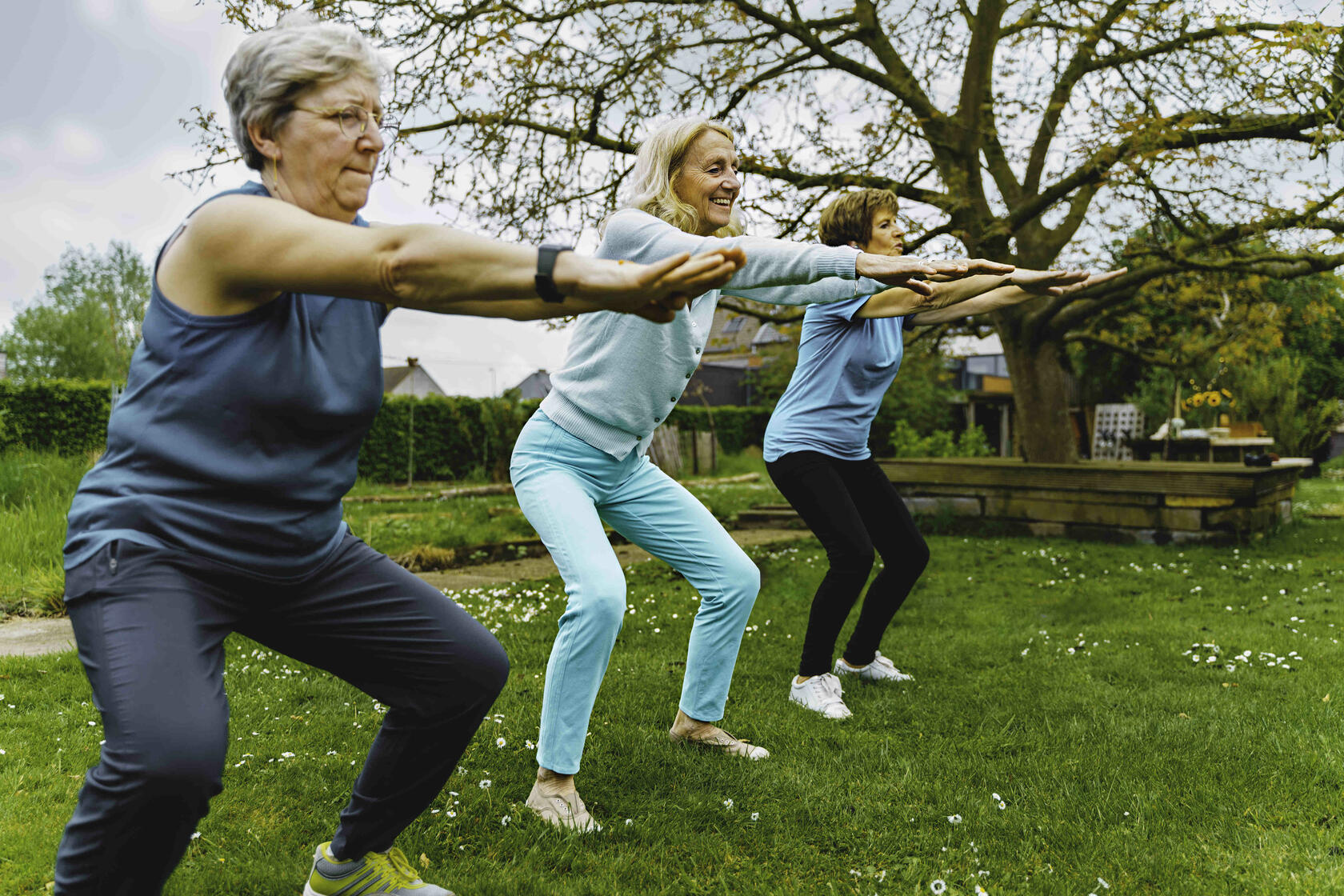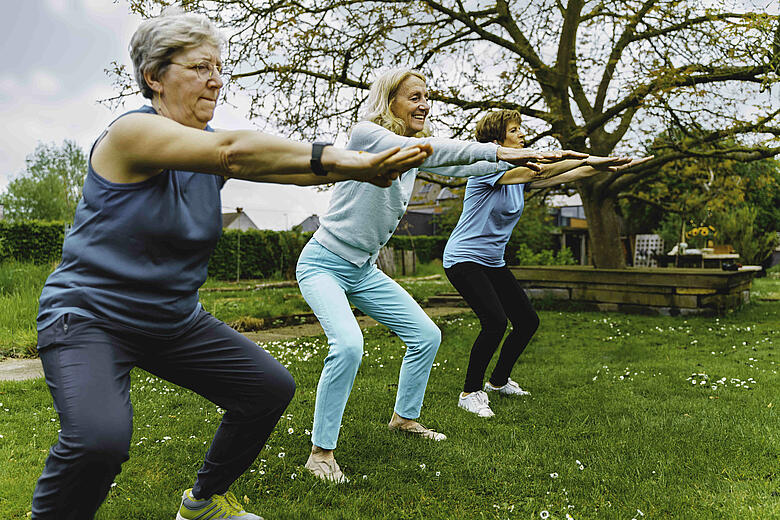What is a Squat?
A squat is a functional movement pattern that helps build strength. You likely squat more than you realise as it’s a common movement engaged in when we sit down and stand up. There are many types of squat variations, however, what’s more important than the type of squats we’re performing is our squatting form. Ideally, we should always intend to perform a squat with near-perfect squatting form to avoid injuries.
To effectively perform an optimal squat, it’s important to consider the following factors. It is worth noting, this can apply to all types of squats.
- Proper breathing/bracing mechanics that engage your core.
- Hips move first on the descent.
- The entire back remains stable through the full movement.
- The knees track in perfect alignment with the toes.
- The hips and chest rise at the same rate during the ascent.
- When using a barbell, maintain it with excellent alignment over the midfoot for the entire squat.
Let’s look at 5 different types of squats, how to perform them and importantly how to avoid common mistakes and potential injuries.
5 Squat Variations
There are many different types of squat variations, from goblet squat, sumo squat, jump squat, front squat, bodyweight squat to Bulgarian spilt squat – the list is almost endless! In this article, we’ll focus on the most common.
1. Body Weight Squat
Ideally, you want to be able to perform a full depth squat without any weight and most importantly pain-free (knee pain when squatting is a common injury we see). In order to squat correctly and pain free, there are 6 fundamentals to follow to set up our squat position.
- Standing position – Stand with your feet slightly wider than shoulder width apart.
- Toe angle - Point your feet as straightforward as possible.
- Tripod foot - Maintain three points of contact with your feet in relation to the floor.
- Hip hinge - To engage the posterior muscle groups (glutes & hamstrings) push your hips backwards slightly and bring your chest forward. Your bodyweight should be balanced over the middle of your feet.
- External rotational torque - At the hips by following cues “squeeze your glutes” and “drive your knees out” while maintaining the “tripod” foot.
- Postural integrity - By holding your arms out in front of your body while looking straight ahead or slightly down.
Once you have set yourself up correctly for your squat position, the focus shifts to the descent. Descend to the bottom-most position in which your mobility allows you. Ideally you want to get to a depth where your thighs are parallel to the ground. Keep your shins as vertical as possible for as long as possible. A deep squat will have the knee moving forward over the toes.
As you reach the bottom position ensure your weight is evenly distributed between the front and back of your foot. It’s also important to ensure your left foot and right foot have your weight distributed evenly.
As you ascend, continue to drive your hips up and back as your shines pull back into a vertical position.
2. Goblet Squat
A goblet squat is a squat variation that differs slightly to your typical bodyweight squat.
To perform a goblet squat you start by holding a weight in front of you, perform your normal bodyweight squat, taking into consideration your squat form, into the bottom-most position as explained above. As you descend, push the weight away from you slightly to keep your back from rounding and as you ascend drive your hips up and backward to return to a vertical position.
As you can see here, the key difference being the inclusion of a weight to add further resistance to the movement pattern.
3. Front Squat
A front squat is exactly as it sounds. Instead of placing the barbell on your back across your shoulders, the barbell sits in front of your body.
To effectively perform a front squat, position the bar at shoulder level on the rack. Next, securely put it on your chest and across your shoulders with your elbows high. Don’t try to maintain a grip on the bar as this can cause unwanted stress of the wrist and elbow leading to injuries. Instead focus on having an open palm.
Continue to establish a stable tripod foot, generate external rotation torque at the hips and create a rigid trunk by taking a big breath and holding it tight. As you descend, engage in a slight hip hinge, keeping the trunk in a vertical position. As you reach the bottom, keep the bar over the mid-foot during the entire squat to remain balanced. Lastly, as you ascend, stand straight up from the bottom position while maintaining an upright chest position with the elbows raised high.
4. Back Squat
One of the more common types of squats is the back squat. To perform a back squat, set the barbell tightly against the “shelf” of your upper back for a high bar back squat, or against the “shelf” of your mid back, just below your shoulder muscles for a low bar back squat. Continue to then perform your squat as normal.
5. Bulgarian Split Squat
The Bulgarian split squat is a harder squat variation that requires exceptional squatting form to perform effectively and safely. To set up for a Bulgarian split squat, take one foot and put it out front, plant it, stand up and put the back foot on top of the bench. Continue to put 90% of your weight on the front leg, the back foot is only there to assist you with balance. Next, engage in a slight hip hinge and squat straight down through your front left leg. It is worth noting as you descend, you should not experience a great stretch in your back leg, if you are, the bench is probably too high for you. In this case, use a small stack of plates instead. To ascend, simply push through your front leg straight up.
3 Commons Mistakes with Technique
Across all squat variations, there are a number of common mistakes that typically occur. Be sure to watch out for these when performing different types of squats!
- Turtle Shell Squat. This generally occurs during the ascent of your squat, where your back rounds and demonstrates a lack of core stability. To fix this issue, ensure you properly breathe and brace. Try this, just before the descent, breathe through your belly, then brace your core.
- Good Morning Squat. This occurs when the hips rise up and the chest drops forward as you execute your ascent. Mostly from coordination issues due to fatigue. To fix this, use the cue “chest up” and try to reclaim a balanced ascent. If the cue isn’t enough, reduce the weight to finish the set.
- Knee Cave Squat. This occurs when your knees are driving inwards during the ascent. To fix this, use the cue “drive your knees out” and followed by “keep your feet firmly planted”.
References
https://squatuniversity.com

